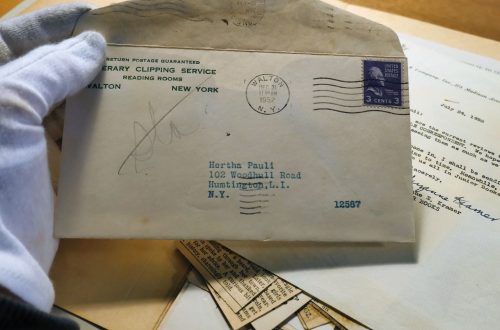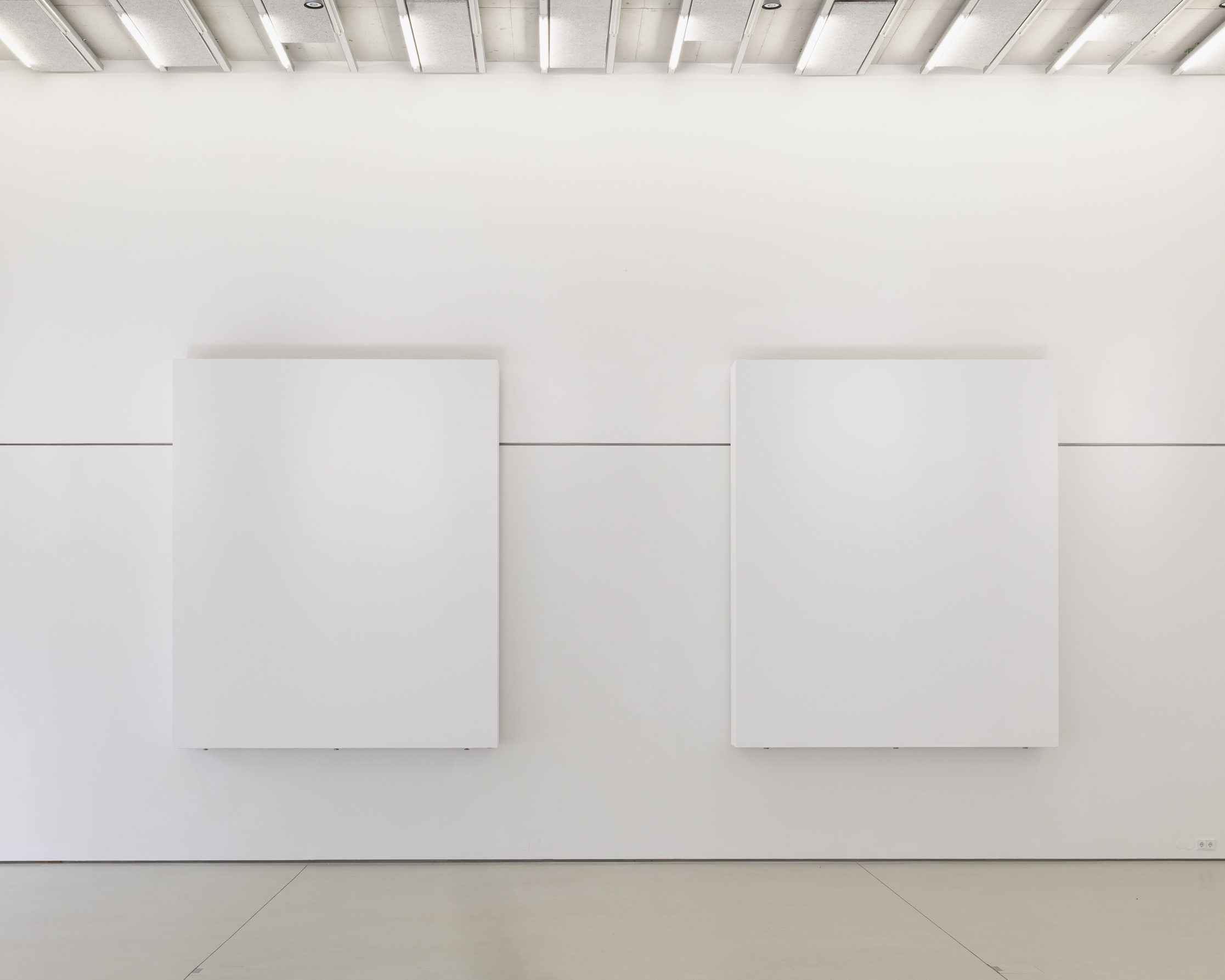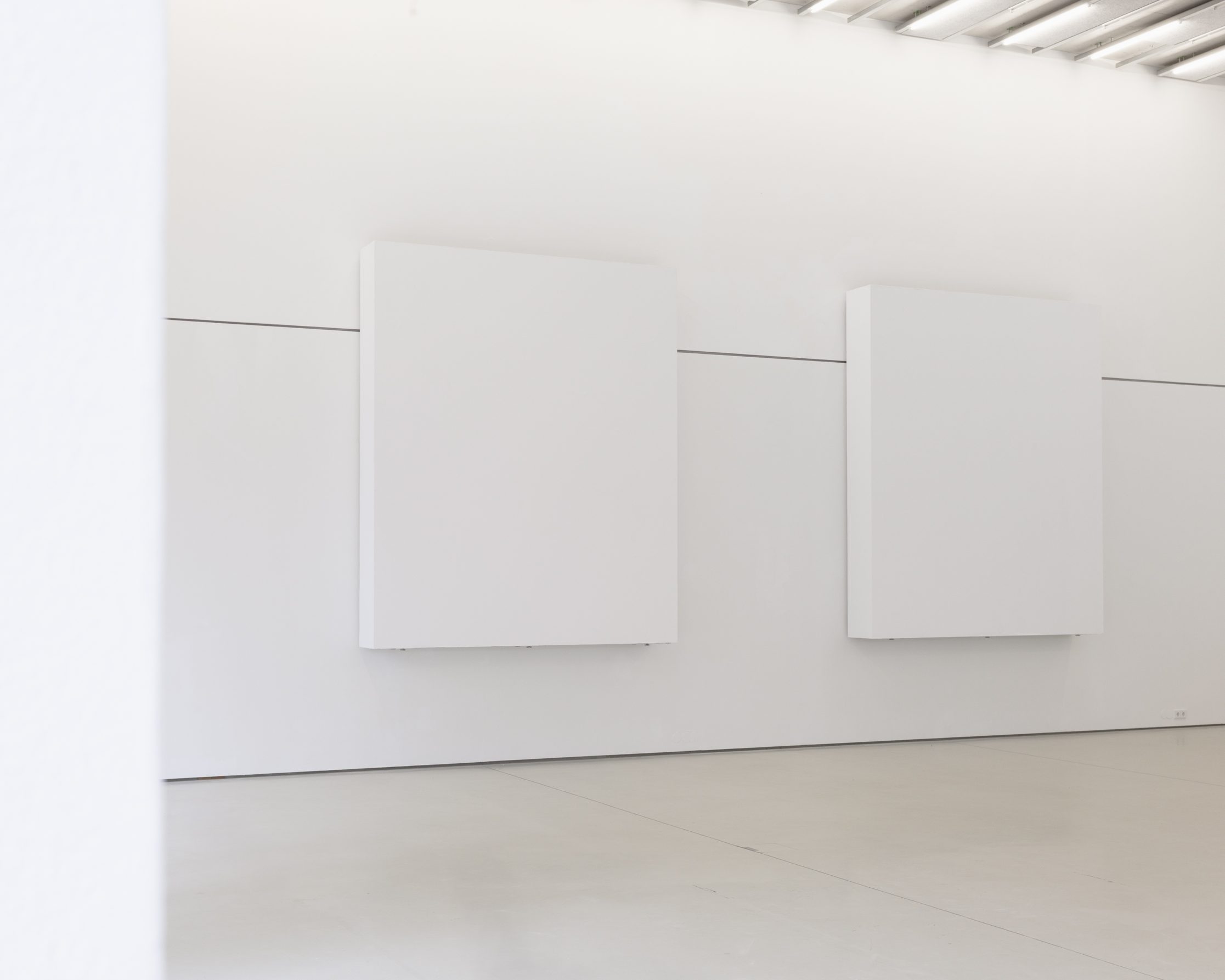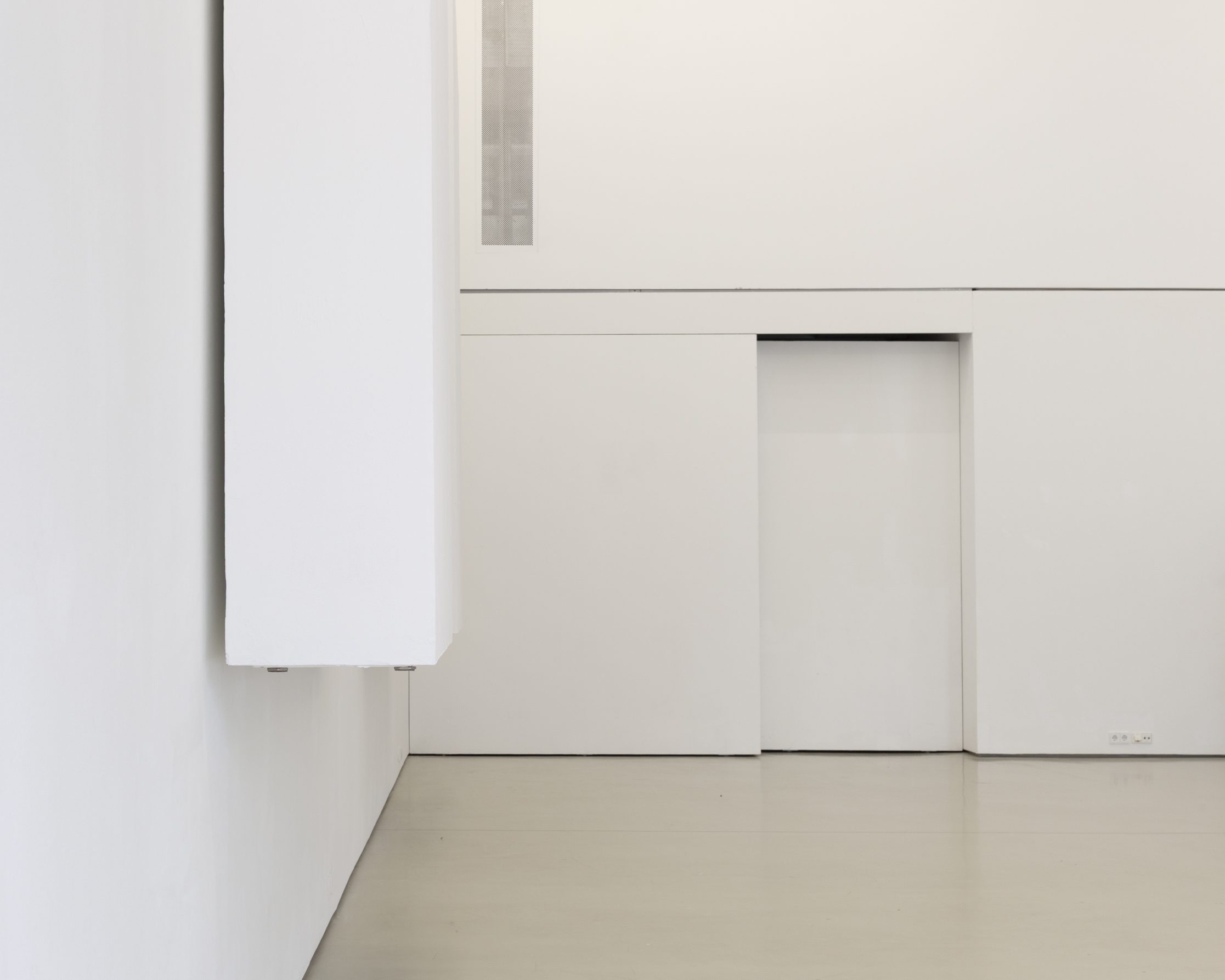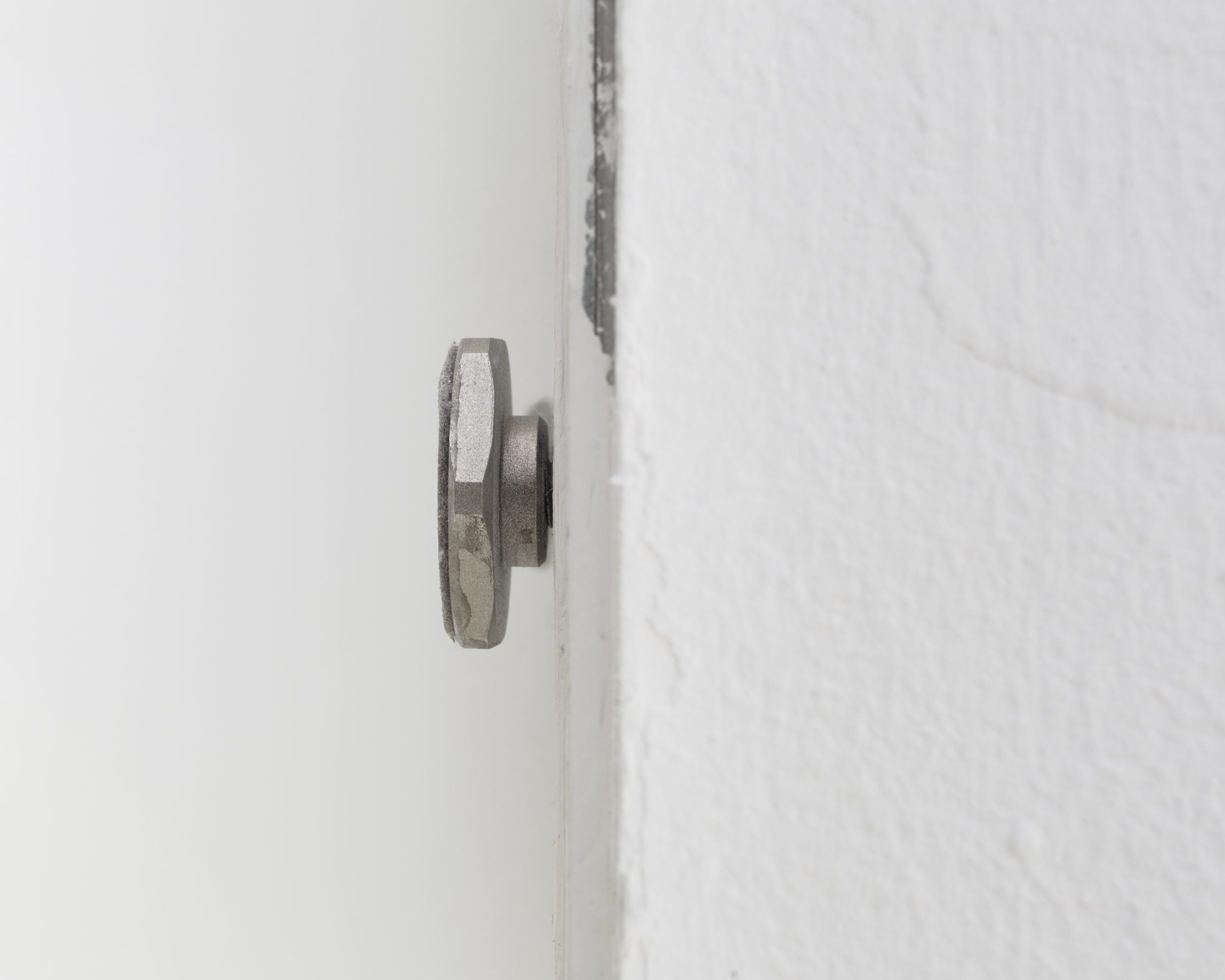800 Kilos of Emptiness
24. September 2025
Daniel Gianfranceschi
At Stadtgalerie Lehen, atelier ///’s “Landschaftsmalerei” whispers poignant questions without ever over-intellectualizing its own nature. The show acts as a memento mori about the very spaces art inhabits, their blind spots, and what happens when the script is flipped
In 1958, Yves Klein would go on to open the exhibition Le vide or, more formally, “La specialisation de la sensibilité à l’état matière première en sensibilité picturale stabilisée” at Galerie Iris Clert in Paris. Predating Sol Lewitt’s formulation of conceptual art (artistic production in which the idea becomes more important than the objecthood of the work), the exhibition consisted of nothing but an empty gallery and its walls, which had been coated in a fresh layer of white paint by the artist himself. Here, miraculously, the display and the institution itself, usually taken for granted, became the essence of the work. A similar, but more nuanced, approach can be observed at Stadtgalerie Lehen, which is currently hosting the exhibition Landschaftsmalerei (i.e., Landscape painting) by atelier ///.
Two monumentally-sized partition walls hang on the gallery’s northern wall, making up the entirety of what is, in a traditional sense, shown. Yet, for a show as reduced as Landschaftsmalerei, the visual and phenomenological impact feels like an institutional-critique gut-punch. One that does not dwell on guilt-tripping the same institutions it questions, but, instead, feels precisely prescient because of how much agency a simple, though physically demanding, gesture is inscribed with. What the conceptually based collective achieves is critique by projection, instead of the intellectual run-around that is institutional-critique’s “show and tell” approach. atelier /// do the inverse: they question the nature of what is deemed worth looking at in a museal context by presenting the wall not as a finite abjection of concrete, wood, or plaster but as the essential auteur for whatever happens in front of it.
The white walls installed at Stadtgalerie Lehen distantly echo Robert Rauschenberg’s White Paintings (1951), which, regarded by John Cage as a kind of “silent prayer”, become objects of profound contemplation instead of remaining a given. While the neutrality of the white paint they are coated in might falsely suggest some kind of ambivalence, their sheer size and weight remind us of the exact opposite, of the specificity involved with installing a wall on a wall. The physical and logistical effort it takes to install something that, visually, acts like a blank canvas. If painter Adrian Ghenie feels exhausted and depressed after two to three months of painting non-stop – as if he were the only one tortured by the creative act – I’d like to talk to him after having installed two walls that weigh about 400 kilograms each. Questions of size, weight, depth, and transportation – questions that are, inherently, important for all types of artistic production – suddenly become amplified to deafening frequencies. This sets the act of installation into a conversation about functionality, form, spatiality, and the earth’s gravitational pull. The “landscape” in the show’s title is neither representation nor figuration: it is an idea about what the word can mean, about the landscape of a room and the psycho-geography that conceptual art, when done well, can expand on.
In fact, the exhibition’s vehemence lies exactly in its ambiguity; in not being overtly sure of itself, never getting too comfortable in assuming a supposed moral high ground, and leaving things, like any good arthouse movie, on a cliffhanger. Even the exhibition text – which one should very much view as an integral part of the installation – written by Nikolaus Kohlberger, does little to describe what is actually shown. Instead, it opts for a more associative, metaphysical approach to contextualization, leaving questions unanswered, not out of spite for the audience but for a system that is not equipped to offer solutions. Exhibition making and its many parts become the main theme of the exhibition, stripping down and uncovering hidden truths in the allegedly mundane. Landschaftsmalerei is everything but ironic, and winning precisely because of it. When critique itself becomes an artistic tool, the point being made had better be as sharp as the blade it seems to spar against. It better hold up a mirror – or, in this case, a wall – to the actuality of events, with their presumed silence louder than the intransigence of education through resentment often found in other forms of institutional criticism. A different, highly specific, and brightly charged approach to the creative act is possible, and atelier /// present 400 kilograms of it.
bis 27. September
Landschaftsmalerei
atelier ///
Stadtgalerie Lehen
Di | Do | Fr 14 – 18 Uhr
Mi 14 – 19 Uhr
Sa 11 – 15 Uhr


Das könnte dich ebenfalls interessieren
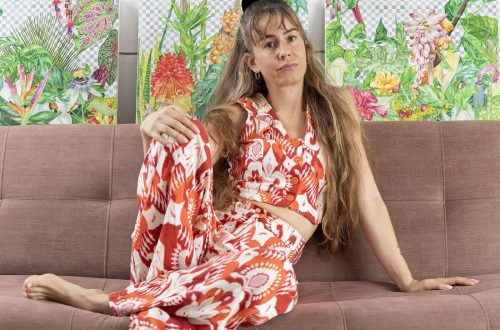
Earth Makers – Wer macht die Welt?
Oktober 3, 2025
Tangerine – Queere Hackingsysteme und bittersüße Gesten
Mai 24, 2025